GL Announces MFC-R2 Signaling Emulation
Welcome to another May 2013 issue of GL's Newsletter providing information and insight into our latest MFC-R2 Signaling Emulation using our MAPS™ Platform.
CAS Signaling in Telecom Networks - An Overview
E1 Multi-Frequency Compelled R2 (MFC-R2) signaling is a Channel Associated Signaling (CAS) protocol used over E1 signaling networks. "Compelled" is to convey that each digit transmission and cessation of transmission is controlled and acknowledged by the receiver of the digit. MFC-R2 is used to convey addressing information along a telephone trunk between two switches in order to establish a telephone call along that path. In the E1 world, CAS protocols use Timeslot 16 for line signaling (also called supervision) - on hook, off hook, seizure, seizure ack, etc. Dual tones representing digits are used for called and calling numbers, sometimes called ANI (Automatic Number Identification) and DID (Direct Inward Dialing).
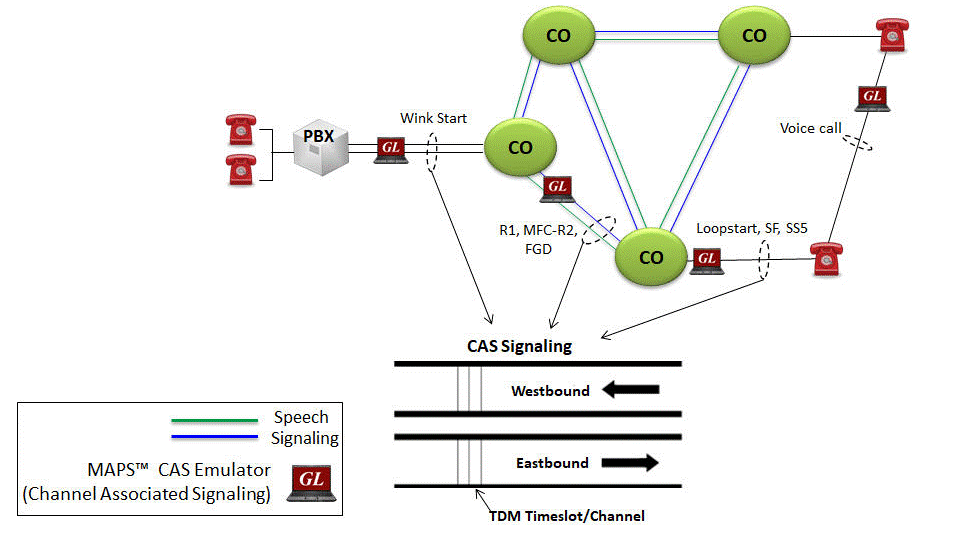
During MFC-R2 signaling, different types of signals are exchanged between two switches in the process of establishing a call and those can be broadly classified as Line Signals and Inter Register Signals. A typical MFC-R2 call flow is as shown below.
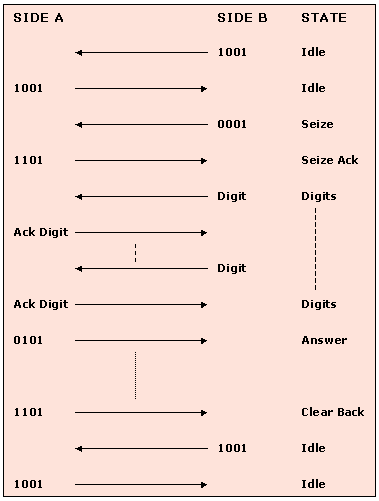
Line Signaling
Line Signals are the ABCD bits of CAS in timeslot 16, which represents the states of the line. Although E1 Channel Associated Signaling (CAS) framing supports 4 signaling bits, only 2 of them (per direction) are used for R2 line signaling. Thus the signaling channels supporting the R2 line signaling protocol are referred to as Af and Bf in the forward direction, and Ab and Bb, in the backward direction. The forward channel indicates the condition of the outgoing switch equipment and reflects the condition of the calling party's line. The backward channel indicates the condition of the called party's line. The following table summarizes the signaling states of a typical call.
MFC-R2 Register Signaling
These are 2 out of 6 inband multi-tone signals sent in both directions associated with the registers used to control the switching process. Some country specific implementations use less number of frequencies in the set. For example, India uses 2 out of 5 frequencies resulting in a total of 10 different tones for forward and backward signals respectively. (Signals sent by the originating point (switch) are called forward and signals sent by the terminating point are called backward) Each (forward and backward) has two lookup tables to assign/decode the meaning of each tone. They are Tables I and II for forward and A and B for backward.) The below Tables summarize the meanings of each of the tones. The meanings can however vary based on country specific implementation.
Compelled Nature of MFC-R2 Signaling
The above forward and backward tones are exchanged between two switches in compelled way as shown below
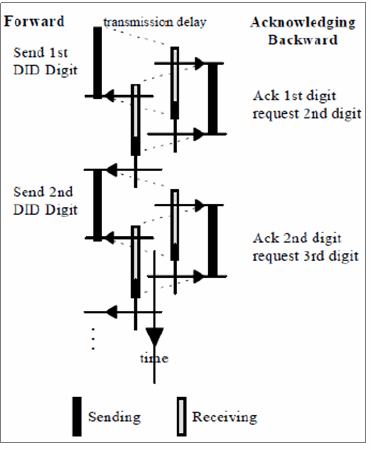
MAPS™ CAS MFC-R2 Signaling Emulation
CAS MFC-R2 protocol emulation has been added to GL's Message Automation and Protocol Simulation (MAPS™) platform. MAPS™ is a protocol simulation and conformance test tool that supports a variety of protocols such as SIP, MEGACO, MGCP, SS7, ISDN, GSM, MAP, CAS, LTE, UMTS, SS7 SIGTRAN, ISDN SIGTRAN, SIP I, GSM AoIP, Diameter and many other telecom protocols.
MAPS™ CAS MFC-R2 Emulator is a client-side application that works along with GL's T1 E1 Analyzer Cards and Windows Client/Server software. This test tool is used to perform testing using CAS signaling and transmission and detection of TDM traffic over T1 E1 using scripts, and offers a complete solution for testing, troubleshooting, and maintenance of devices and networks implementing CAS protocols. E1 MFC-R2 Signaling (all variants, full /semi compelled) Emulation as defined per the ITU Recommendations Q.421-Q.442 can be supported by extending the existing scripts.
MAPS™ CAS Emulator can also support various CAS protocols such as E1 European Digital CAS (EUC), E1 Digital E & M, E1 International Wink Start, T1 Wink Start (R1 wink), T1 Loop Start, T1 Ground Start, T1 Feature Group D, T1 Immediate Start, and any user-defined CAS protocol.
MAPS™ CAS Emulator automates the testing procedure with ready scripts for inbound and outbound calls. Calls are established, once the signaling information such as signaling bits, DTMF/MF digits, or tones are sent or detected.
Important Features
- Sends MFC-R2 forward and backward tones per CCITT specifications
- Mimics the compelled network
- Establishes calls manually or automatically
- Time-slot selectable
- Record communication exchanges to log file
Applications:
- Determine addressing formats between exchanges
- Test & analyze MFC-R2 addressing formats
- Manually test MFC-R2 implementations
- Test forward capabilities using automated backward sequences
For comprehensive information on the application, you may refer to the MAPS™ MFC-R2 Signaling Emulation web page.
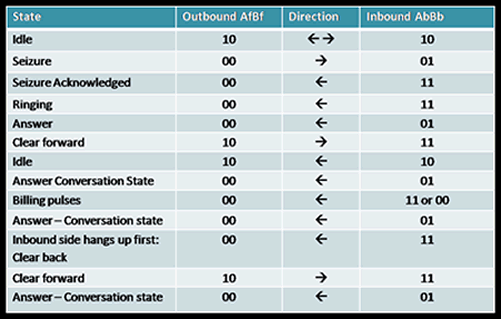
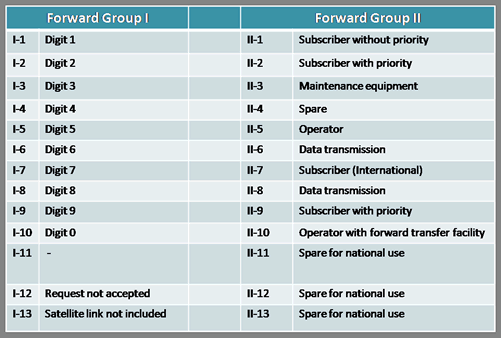
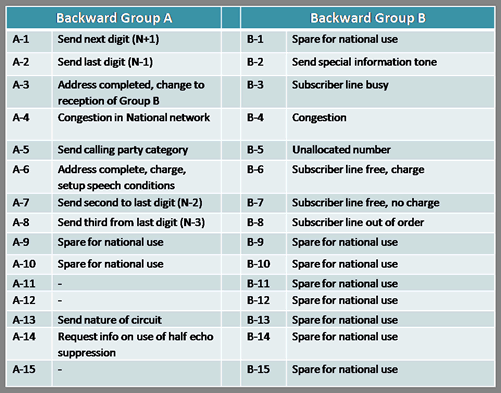
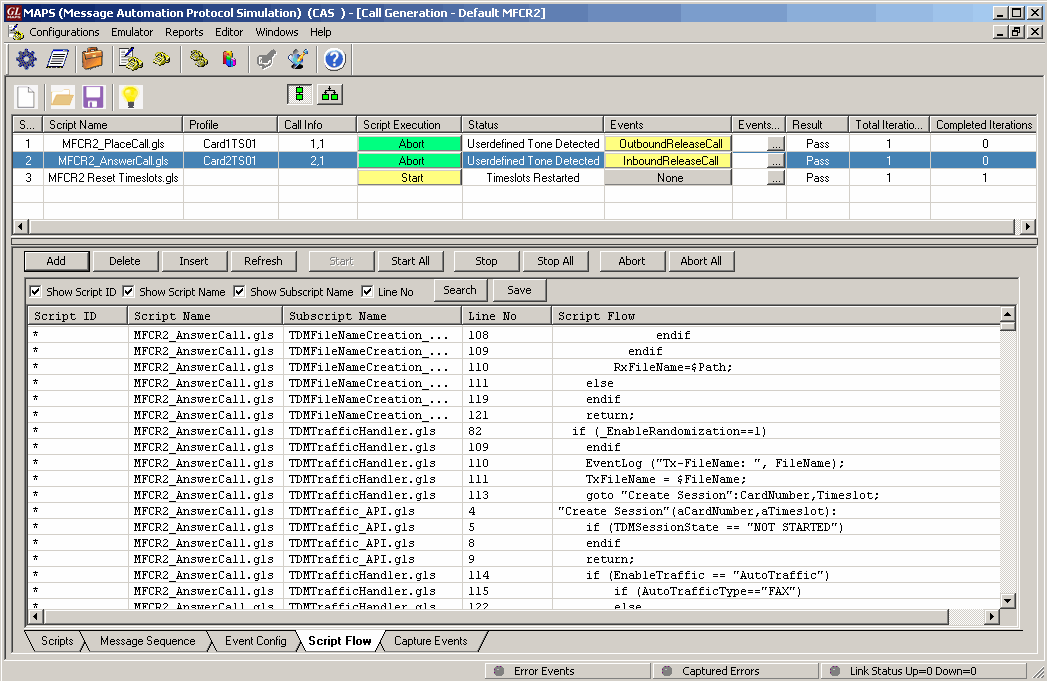
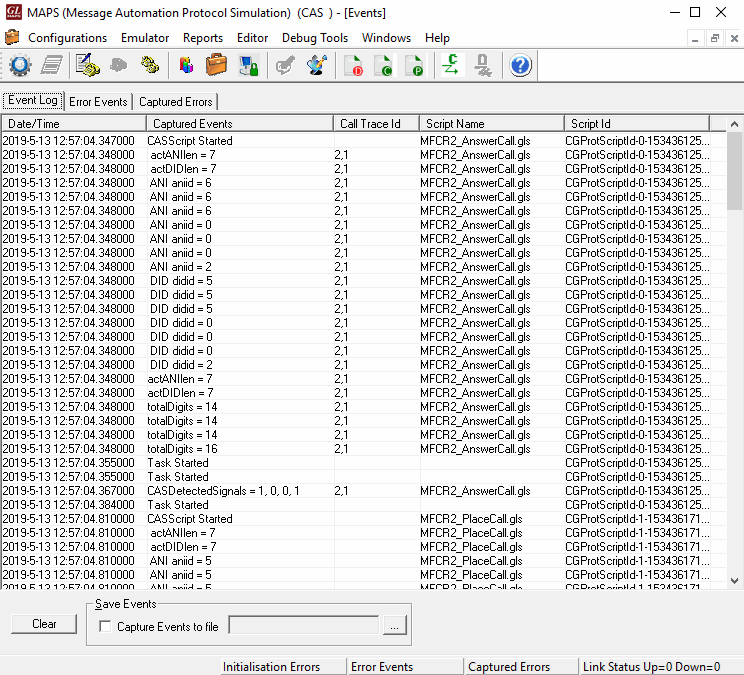
 Back to Newsletter Index Page
Back to Newsletter Index Page